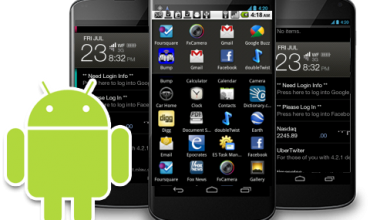Smartphones keep getting smarter and more useful. Now they’re turning into mobile TV broadcasting stations.
Sprint last week announced the HTC Evo 4G. It’s the first phone to run on Sprint’s next-generation 4G high-speed mobile broadband network. Sprint offers 4G service in 27 markets with plans to roll it out to more markets (including the Bay Area) later this year. The phone is expected to be available this summer.
One thing interesting about this phone is that it has two cameras. Like most smartphones, there’s one on the back that the user controls from the front of the camera to take pictures or video of others. The back-facing camera on the Evo has an exceptionally high-resolution 8 megapixels and the ability to capture high definition video.
But the phone also has a 1.3-megapixel camera on its front, so it can easily take a picture or video of the phone’s user. Aside from being able to take vanity pictures of yourself, that feature — when combined with the phone’s high-speed network — allows live video conferencing. You could also use the camera in the back to broadcast whatever is around you.
I have a feeling that this phone is going to appeal to kids who love to interact with their friends via photos and video. Like other camera phones, it raises some privacy and safety issues. I hope Sprint provides kids and parents with some basic education on the safe use of this very cool technology.
The phone will ship with the same Android 2.1 operating system and 1 GHz Snapdragon processor as Google’s Nexus One. It, of course, will have the usual Android features, including GPS, Bluetooth and the ability to connect via Wi-Fi.
The phone will also enable users to create their own Wi-Fi hotspot. For example, commuters who carpool could share the signal to connect laptops or other devices for up to eight passengers. The phone will have an HDMI output for sending high-definition (720p) video and photos to a TV set.
But you don’t have to wait until summer to check out an HTC phone with the physical look and feel of the Evo 4G. The HTC HD2, which runs the Windows Mobile 6.5 operating system, hit T-Mobile stores last week. It has the same 4.3 inch screen as the Evo and uses the same fast processor. It doesn’t have the front camera but it does have a 5-megapixel camera on the back, which is pretty much the standard for new high-end smartphones.
The HD2 is all about entertainment and comes pre-loaded with two movies: “Transformers” and “Transformers: Revenge of the Fallen.” These are not my favorite flicks but they do demonstrate the quality of the screen and the fact that viewing movies on a smartphone can be a reasonably OK experience, thanks in part to that 4.3-inch high-resolution screen, which T-Mobile says is the largest of any smartphone sold in the United States. A mobile version of the “Guitar Hero” game is also pre-loaded. And the phone comes with a GPS and turn-by-turn navigation from Telenav.
To its credit, HTC layered its “Sense” user interface over Windows Mobile 6.5, which makes it more user-friendly than most Windows mobile phones. Also, the faster processor makes up for the otherwise sluggish performance I’ve experienced on other Windows phones. However, Windows did raise its ugly head twice during my test of the phone.
When I tried to rent a movie from Blockbuster, I got a long error message that ended with, “make sure the clocks are synchronized or use the timeTolerenceInSeconds element in the microsoft.web.services3.”
Because I couldn’t watch a movie, I figured I’d read a book. But when I tried using Barnes & Nobel’s book reader, I got the message “Error opening the shortcut or locating the target filename.” Fortunately, I was able to use the phone to make calls.
Microsoft last month unveiled an entirely new mobile operating system, Windows Phone 7 Series, which was rewritten from the ground up. The new Windows mobile won’t run existing applications, so anyone who buys a Windows phone today is buying into a dying ecosphere.
Windows Phone 7 won’t be available until late this year. But even then, it won’t be possible to upgrade the HD2 to the new operating system.
If I were buying a smartphone today, I’d stick with Blackberry, iPhone or a phone running Google’s Android operating system.
Resource:
http://www.mercurynews.com/business-headlines/ci_14759703




